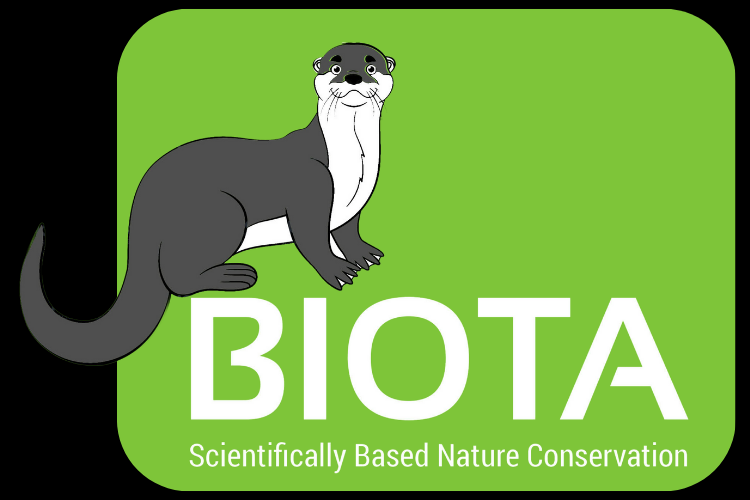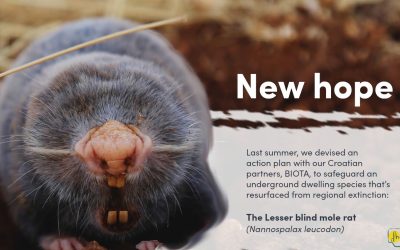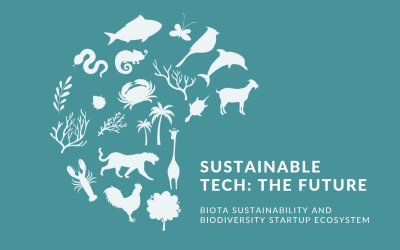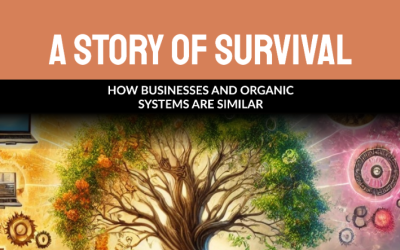Why This Matters
Every topic we cover underscores a simple truth: our actions today shape the world of tomorrow. By understanding and engaging with these concepts, we can all contribute to a future where technological progress does not come at the expense of our planet but works in harmony with it.
What’s Inside:
-
-
The Pulse of Biological Research: Discover how studying life forms helps us unlock the mysteries of nature and drives innovations in medicine, agriculture, and environmental management.
-
Championing Biodiversity Conservation: Learn about the vital efforts to protect the rich variety of life on Earth, ensuring that ecosystems remain resilient and robust.
-
Innovations in Biotechnology: Explore how sustainable biotechnology and genetic engineering advancements are creating solutions for some of the world’s most pressing challenges, from health to energy.
-
Towards a Greener Economy with Bioeconomy Solutions: See how the shift towards using biological resources is paving the way for sustainable economic growth and environmental stewardship.
-
Community and Technology in Conservation Monitoring: Uncover how citizen science initiatives and remote sensing applications are revolutionizing the way we monitor and protect our natural world.
-
Restoring and Protecting Ecosystems: Dive into stories about ecological restoration, wildlife habitat restoration, and wetland projects that are healing the planet.
-
Adapting to Climate Change: Get informed on climate resilience strategies and sustainable practices that help communities and ecosystems adapt to changing climates.
-
Sustainable Practices in Agriculture and Industry: Find out how sustainable agriculture practices, green chemistry innovations, and the development of biodegradable materials are reducing our environmental footprint.
-
The Future of Energy and Resources: Learn about renewable energy from biomass and circular economy initiatives that promote resource efficiency and sustainability.
-
-
Biological Research: Studying living things—like plants, animals, and microorganisms—to understand how they work and interact with each other and their environments.
-
Biodiversity Conservation: Protecting the variety of all life forms on Earth, ensuring that different species continue to exist and thrive.
-
Conservation Monitoring: Keeping an eye on wildlife and natural areas over time to check their health and make sure they’re not declining.
-
Action Planning: Creating a detailed plan of steps to solve a problem or achieve a goal, such as saving an endangered species.
-
Biotechnology Innovation: Developing new technologies that use living organisms or their parts to create products or solve problems, like new medicines.
-
Bioeconomy Solutions: Using biological resources and processes to produce sustainable goods and services, aiming for a greener economy.
-
Environmental Research: Studying the environment to understand how natural systems work and how human activities affect them.
-
Sustainable Biotechnology: Using biological processes in ways that are environmentally friendly and can be maintained over the long term.
-
Genetic Diversity Analysis: Examining the variety of genes within a species to assess its health and ability to adapt to changes.
-
Ecosystem Conservation: Protecting entire natural systems—including all plants, animals, and their environment—to keep them functioning properly.
-
Wildlife Monitoring: Observing wild animals and their habitats to gather information about their populations and wellbeing.
-
Species Preservation: Efforts to prevent species from becoming extinct, ensuring they continue to exist in the wild.
-
Ecological Restoration: Repairing damaged natural areas to bring them back to their original condition.
-
Bioprospecting: Searching for useful substances in nature, like plants that could lead to new drugs.
-
Climate Change Adaptation: Adjusting our ways of living and infrastructure to cope with the effects of climate change.
-
Genetic Engineering Advancements: Improvements in techniques that allow us to modify the genes of organisms for desired traits.
-
Bioremediation Technologies: Using living organisms to clean up pollution from the environment.
-
Sustainable Agriculture Practices: Farming methods that produce food without harming the environment or depleting resources.
-
Bioinformatics Analysis: Using computers to manage and analyze biological data, like genetic sequences.
-
Biomimicry Applications: Designing products or systems by imitating solutions found in nature.
-
Microbial Ecology Studies: Studying microorganisms in their natural habitats to understand their roles in ecosystems.
-
Natural Resource Management: Managing natural resources like water, soil, and forests to use them wisely and sustainably.
-
Environmental Impact Assessment: Evaluating how a proposed project might harm the environment before it starts.
-
Plant and Animal Breeding: Selecting and breeding plants or animals to enhance desirable traits.
-
DNA Sequencing Techniques: Methods used to determine the exact sequence of DNA building blocks in a genetic material.
-
Bio-based Product Development: Creating products from biological materials instead of non-renewable resources like oil.
-
Renewable Energy from Biomass: Generating energy from organic materials like plant matter and waste that can be replenished.
-
Green Chemistry Innovations: Developing chemical products and processes that reduce or eliminate hazardous substances.
-
Aquatic Biodiversity Conservation: Protecting the variety of life in water environments like lakes, rivers, and oceans.
-
Forest Ecosystem Management: Caring for forest areas to maintain their health and resources for the future.
-
Soil Microbiology Research: Studying microorganisms in the soil to understand their effects on soil health and plant growth.
-
Marine Biodiversity Protection: Safeguarding the variety of life in the oceans, including all marine species and habitats.
-
Crop Genetic Improvement: Enhancing crop plants genetically to improve yields, resistance to pests, or tolerance to harsh conditions.
-
Environmental Monitoring Solutions: Tools and methods used to regularly check environmental conditions like air and water quality.
-
Wildlife Habitat Restoration: Restoring areas where animals live to improve their quality and support more wildlife.
-
Climate Resilience Strategies: Planning and actions to help communities and environments withstand climate-related challenges.
-
Circular Economy Initiatives: Promoting a system where resources are reused and recycled to minimize waste.
-
Biodegradable Materials Development: Creating materials that can naturally break down without harming the environment.
-
Pollution Control Technologies: Technologies designed to reduce or eliminate the emission of pollutants into the environment.
-
Wildlife Corridor Planning: Designing pathways that connect natural habitats, allowing animals to move safely between them.
-
Indigenous Biodiversity Conservation: Protecting native species and ecosystems, often incorporating indigenous knowledge and practices.
-
Remote Sensing Applications: Using satellite or aerial images to gather information about the Earth’s surface for monitoring purposes.
-
Conservation Genetics Studies: Using genetic information to aid in the conservation of species by understanding their genetic diversity.
-
Urban Biodiversity Conservation: Protecting and promoting plant and animal life within cities to enhance urban ecosystems.
-
Wetland Restoration Projects: Efforts to restore wetlands to their natural state to support biodiversity and ecosystem services.
-
Sustainable Fisheries Management: Regulating fishing activities to ensure fish populations remain healthy and can replenish.
-
Land-use Planning for Biodiversity: Organizing how land is used to balance human needs with the protection of natural habitats.
-
Citizen Science Initiatives: Projects where everyday people contribute to scientific research, like tracking bird migrations.
-
Green Infrastructure Development: Incorporating natural elements into urban planning to improve environmental quality and human wellbeing.
-
Genetic Conservation Strategies: Methods to preserve the genetic variety within species to help them survive environmental changes.





0 Comments